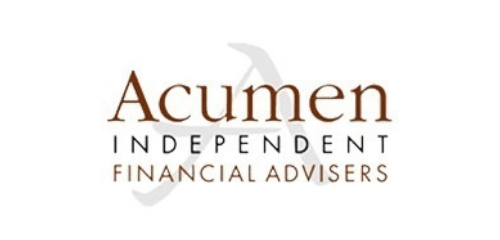Pensions
Pensions
Pensions are designed to enable you to save sufficient money during your working life to provide an income stream for you to live comfortably after you have retired. There are many different ‘tools’ used to save for retirement, the taxation and investment elements of pensions can appear baffling. We specialise in explaining, recommending and monitoring pensions for you. Below are the most common sources of pension income to provide for your retirement.
Single Tier State Pension
The new State Pension is a regular payment from the government that you can claim if you have reached State Pension Age (SPA) on or after 6 April 2016. Other arrangements applied prior to that date.
You’ll be able to get the new State Pension if you are eligible and:
• a man born on or after 6 April 1951
• a woman born on or after 6 April 1953
If you reached State Pension age before 6 April 2016, you’d get the State Pension under the Basic State Pension and Additional State benefits headers as shown below. The full new State Pension is £175.20 per week (2020-21). Your National Insurance record is used to calculate your new State Pension. You’ll usually need 10 qualifying years to get any new State Pension, 35 qualifying years for the full amount.
The amount you get can be higher or lower depending on your National Insurance record.
The basic State Pension applies to people whose State Pension Age falls before 6th April 2016, for people who have paid sufficient National Insurance Contributions while at work or have been credited with enough contributions. **
Additional State Pension (as above) – referred to as the State Second Pension (S2P) but before 6 April 2002, it was known as the State Earnings Related Pension Scheme (SERPS). From 6 April 2002, S2P was reformed to provide a more generous additional State Pension for low and moderate earners, carers and people with a long-term illness or disability and is based upon earnings on which standard rate Class 1 National Insurance Contributions are paid or treated as having been paid. Additional State Pension is not available in respect of self-employed income.
From April 2016, both the basic State Pension and Additional State Pension were combined to offer a simple single tier flat rate pension. **
An occupational pension (through an employer’s pension scheme) – This could be a final salary scheme (referred to as defined benefit) or a money purchase scheme (usually referred to as defined contribution). Pensions deriving from final salary schemes are usually based on your years of service and final salary multiplied by an accrual rate, commonly 60ths. The benefits from a money purchase scheme are based on the amount of contributions paid in and how well the investments in the scheme perform.
Personal pensions schemes (including stakeholder schemes) – these are also money purchase schemes and are open to everyone and especially useful if you are self-employed, just for topping up existing arrangements. From October 2012, all employers now have to offer their employees, who meet certain criteria, automatic enrolment into a workplace pension.
Retirement Options – there are now a vast array of different products that may be used at retirement to provide benefits, from the traditional form of annuity that provides a regular income stream to Flexi-access Drawdown which enables lump sums of benefits to be taken either as a one-off payment or over a given number of years. Given the complexity and choice all individuals now have, it is important to seek independent financial advice before making any decisions.
State Pensions may not produce the same level of income that you will have been accustomed to whilst working. It’s important to start thinking early about how best to build up an additional retirement fund. You’re never too young to start a pension – the longer you delay, the more you will have to pay in to build up a decent fund in later life.
** For those who have reached State Pension Age on or after 6th April 2016, these no longer apply.
THE FINANCIAL CONDUCT AUTHORITY DOES NOT REGULATE TAXATION ADVICE.
Pensions are a long-term investment. You may get back less than you put in. Pensions can be and are subject to tax and regulatory change; therefore, the tax treatment of pension benefits can and may change in the future.
Pension Simplification
Pension simplification introduced two new controls, the Lifetime Allowance (LA) and Annual Allowance (AA). The LA is currently £1,073,100 and the individual AA is £40,000.
Most individuals are able to fund up to these limits with the possibility to also carrying forward unused AA from the previous three years. Exceeding the LA or the AA will trigger a tax charge.
The changes include:
• To increase the flexibility of the drawdown rules by removing the maximum ‘cap’ on withdrawal and minimum income requirements for all new drawdown funds from 6 April 2015
• To enable those with ‘capped’ drawdown to convert to a new Flexi-access Drawdown fund once arranged with their scheme
• To enable pension schemes to make payments directly from pension savings with 25% taken tax-free, known as the Uncrystallised Fund Pension Lump Sum (UFPLS) option
• To remove restrictions on lifetime annuity payments
• To ensure that individuals do not exploit the new system to gain unintended tax advantages by introducing a reduced Annual Allowance of £10,000 for money purchase savings where the individual has flexibly accessed their savings
• To increase the maximum value and scope of trivial commutation lump sum death benefits.
Other changes include:
• Early retirement age available from age 55
• Full concurrency (i.e. being able to pay into any array of plans you wish), subject to the Annual Allowance and potential for carry forward
• Wide investment flexibility
• Up to 25% tax-free cash
• The ability to commute ‘small’ funds as a one-off lump sum as opposed to having to draw a regular income from age 55 (subject to part of the fund being taxed)
• Flexible options at retirement when deciding to take benefits such as Flexi-access Drawdown
• No need to ‘have to’ secure benefits at age 75 via an annuity. In addition, pension freedom gives individuals further and greater flexibility to access their pension savings from age 55.
Get Professional Advice for Your Pension Scheme
Pensions are a long-term investment. You may get back less than you put in. Pensions can be and are subject to tax and regulatory change therefore the tax treatment of pension benefits can and may change in the future
Your Retirement Options
From age 55, there are a number of options available to you.
• The ability to draw your benefits available from the existing provider
• Purchase an annuity with a different provider on the open market, this could potentially increase the payments to you
• Transfer to Flexi-access Drawdown (or a third way plan)
• Use the Uncrystallised Fund Pension Lump Sum (UFPLS) rules
• Transfer to phased retirement
• Transfer the full amount to any/a combination of the above
• Undertake a partial transfer to any/a combination of the above

Draw your benefits from your current scheme
Pension arrangements can usually provide an immediate tax-free lump sum, commonly known as Pension Commencement Lump Sum (PCLS), sum of 25% with the remaining fund generating an income which is subject to Income Tax. Some schemes/providers also allow partial transfers to facilitate added flexibility.

Purchase an annuity with a different provider on the open market
Transferring funds from the existing provider and shopping around on the open market can considerably increase the level of your income. This is because some providers offer better rates than others.
Buying an annuity means using your built-up pension fund to buy the guarantee of an income for life from a company. Before you buy your annuity with another provider, you will still have the option to receive the PCLS from the original pension scheme, but the remaining fund value is passed to the new provider to secure your guaranteed income. The value of your pension income in these circumstances depends on several factors such as your age, current interest rates, the value of your pension fund and the type of pension you choose. Enhanced annuity terms may be available if, for example, you have a life-impairing medical condition.
Flexi-access Drawdown (FAD)
Under the option of FAD you can choose to immediately take 25% PCLS tax-free from your plan. Instead of buying an annuity with the remainder of the fund, the money remains invested and can continue to benefit from investment performance in a tax-efficient environment. There will be no limit on the income taken which is taxed at marginal rate.
After you have taken your entitlement to the PCLS at outset, you can choose to take as much or as little of the remaining pot as you wish, and it will be added to any other income you have in that tax year to determine the Income Tax rate that will apply. If you draw any income from this plan, any future money purchase pension contributions are limited to a £4,000 maximum Annual Allowance, and these will be no ability to make use of any carry forward. (i.e. topping up any unused annual allowance in future.)
As the rest of your pension fund remains invested in a tax-efficient environment, your final pension – and the income you may withdraw each year – will be determined by the continued investment performance of your funds. Careful attention, therefore, needs to be given to investment management whilst in Flexi-access Drawdown, to try to ensure that your income can continue for as long as possible and, if you do finally buy an annuity, you would be in a similar situation to that if you had bought an annuity at the start.
You can vary your income each year and the level of income you choose to take will have an effect on the value of your invested fund which will influence both future levels of income as well as the amount of any annuity income you may choose to buy.
Whilst in the short term many clients wish to consider drawing large amounts of income from their funds, in the medium to long-term it is important that you balance your income requirements with the investment policy to ensure the annuity purchasing power of your pension fund is maintained.

With this type of contract (together with the UFPLS option shown below):
1. The capital value of the fund may be eroded;
2. The investment returns may be less than those shown in the illustrations;
3. Annuity or scheme pension rates may be at a worse level in the future;
4. When large amounts of income are taken or the maximum short-term annuity is purchased, high levels of income may not be sustainable;
5. Be aware that some state benefits are means tested by the DWP.
Draw your benefits as an UFPLS payment from your current scheme
Your current pension arrangement could provide you with multiple or a one-off lump sum. 25% of this would be tax-free, with the remaining pot initially taxed at emergency rate then falling to marginal rate in the future. There is no limit on the size of the lump sum you choose to draw. This type of payment will limit any future money purchase pension contributions to a £4,000 maximum Annual Allowance.

Phased Retirement This option allows you to retire gradually.
It can make the most tax-efficient use of your pension fund and it also allows you to build up the value of your pension when it suits you.
Generally, your pension fund is split up into 1,000 equal segments, and these segments can be phased in over a number of years. Every time you phase in some segments, you can choose to receive a PCLS of up to 25% of the value of these segments, and the remainder of the fund will be used to buy you an annuity. The pension bought will be guaranteed to be paid to you for life, and you can choose one that increases in value each year and whether payments should continue for your spouse if you die first. The remaining segments will continue to be invested in a tax-efficient environment, thus providing you with the possibility of higher future income.
A Phased Flexi-access Drawdown / Combination plan consists of two distinct parts.
Firstly, the funds are transferred into the plan. The plan is split into a large number of identical “mini-plans”, from which benefits can be taken at different times. This provides a large degree of control over the amount and timing of the income to be taken.
Income is released by “opening” sufficient numbers of these mini-plans to produce the required level of income. This is achieved by transferring the funds to the FAD element of the plan. When each mini-plan is opened, 25% of its fund value is released as tax-free cash. The residual fund from each mini-plan then remains invested in real assets and an income is drawn directly from this remaining fund. The income that is drawn from the FAD funds can be varied. Each income payment that you receive is therefore made up of part tax-free cash and part (taxable) income from the FAD element of the plan.
Important Note:
HMRC has advised that, where an individual flexibly accesses their pension benefits and takes an income stream, they then have a duty to tell the scheme administrators of any ‘live’ (where contributions are still being made) or future pension schemes they join in the future, that they have done so. This is your own personal responsibility. This is because the money purchase Annual Allowance falls to £4,000 where an UFPLS payment is made and scheme administrators have a duty to inform HMRC if they think someone has paid pension contributions which exceed this limit.
You should note that, if you do not inform other scheme administrators that you have drawn income from your FAD within 91 days, you will be liable for a penalty of up to £300. Where information is not provided after the initial penalty, a further penalty of up to £60 per day may be applied until the information is provided. If incorrect information has been provided a penalty of up to £3,000 may be due where that incorrect information has been negligently or fraudulently provided.
Pensions are a long-term investment. You may get back less than you put in. Pensions can be and are subject to tax and regulatory change; therefore, the tax treatment of pension benefits can and may change in the future.
Personal and Stakeholder Pensions
Personal Pensions represent a popular and attractive way of saving for your retirement.
All monies invested into your fund grow free of Capital Gains Tax, and the contributions you make are enhanced by Income Tax relief at source. For example, if you invest £80, the government adds on tax relief (currently 20%) to enhance your contribution to £100. If you are a higher rate taxpayer, you can claim additional relief through your PAYE coding. An Annual Allowance of up to £40,000 is available as well as the possibility of utilising potential carry forward of unused Annual Allowances.
A personal pension is an arrangement made in your name over which you have personal control. You can alter your contributions, suspend them, or stop them completely. Contributions are restricted to £4,000 under these plans where an individual has already flexibly accessed any income under another money purchase plan.
You will be eligible to take 25% of your accumulated fund tax-free when you retire, the earliest age being from 55. There are a range of options when you decide to take benefits such as purchasing an annuity or electing capped or flexible drawdown.
Personal Pensions usually offer a range of investment mediums to suit your attitude to investment risk, and you can change your investment at any time.
Stakeholder pensions are similar to personal pensions, but have their charges capped at 1.5% for the first 10 years, reducing to 1% thereafter. Whilst stakeholders are generally considered a little cheaper than personal pensions, investment choices may be restricted. Pensions are a long-term investment. You may get back less than you put in. Pensions can be and are subject to tax and regulatory change therefore the tax treatment of pension benefits can and may change in the future
Other Types of Pensions
In recent years the pensions industry has become more advanced in terms of the flexibility of investments available and the structure of the actual pension arrangements. This is an area of constant change and we recommend regularly reviewing your pension provision to plan for a secure and enjoyable retirement.
Self-Invested Personal Pensions (SIPPs)
A Self-Invested Personal Pension (SIPP) is a tax-efficient wrapper within which a wide range of investments can be held. SIPPs have the same tax benefits and regulations as conventional personal pension plans but have control over the investment choice – each SIPP is unique to the individual. Otherwise, it operates in the same way as a conventional personal pension in respect of contributions and eligibility, for tax purposes. A SIPP must appoint a scheme administrator, usually the recognised product provider.
The complex nature of a SIPP means that it is not suitable for all investors. Often, the benefits of ‘self-investment’ are only advantageous to people with very large funds and/or investors with some level of sophistication when it comes to investment decisions.
Often, there are additional charges for arranging and dealing within a SIPP and these charges would erode smaller funds quickly.
The benefits of using a SIPP include being able to invest in:
• Stocks and shares listed or dealt on an Inland Revenue recognised stock exchange, including AIM
• Stock exchanges that are not recognised by HMRC
• Unit trusts, Open Ended Investment Companies (OEICs)
• Warrants, covered warrants
• Government stock and fixed interest stock
• Unquoted shares
• Commercial property
• Property funds
We will be able to provide more details and make a recommendation based on your circumstances. Pensions are a long-term investment. You may get back less than you put in. Pensions can be and are subject to tax and regulatory change, therefore the tax treatment of pension benefits can and may change in the future.
Want to find out more?
Why use an Independent Financial Adviser?
As Financial Advisers, Acumen Associate Financial Services Ltd have access to a wide range of products and services available in the UK – as opposed to Restricted Advisers, who may only advise and offer products from the company they represent. This means that we are able to give you impartial financial advice and recommend the most appropriate products for you, so that you will enjoy choice, value for money and our high-quality service. Acumen Associate Financial Services Ltd are authorised to deal with many forms of financial services and specialise in giving advice to clients on a wide range of subjects to assist with your personal and corporate financial planning.

Menu
Location
Acumen Bungalow,
24 Castan Road,
Pontyclun
CF72 9EH
Trading address:
Acumen House
Ynysddu
Pontyclun
CF72 9UA
Acumen Independent Financial Advisers is registered in England and Wales no. 5009614. Registered office 16 Gold Tops, Newport NP20 4PH.
Authorised and regulated by the Financial Conduct Authority. Acumen Independent Financial Advisers is entered on the Financial Services Register https://register.fca.org.uk/under reference 774649.
If you wish to register a complaint, please write to mail@acumenifa.com or telephone 0800 298 6311. A summary of our internal complaints handling procedures for the reasonable and prompt handling of complaints is available on request and if you cannot settle your complaint with us, you may be entitled to refer it to the Financial Ombudsman Service at www.financial-ombudsman.org.uk or by contacting them on 0800 0234 567.
All Rights Reserved | Acumen Independent Financial Advisers. All rights reserved. Privacy Policy | Website by WebJewel Digital